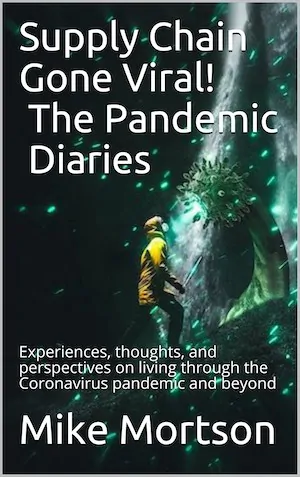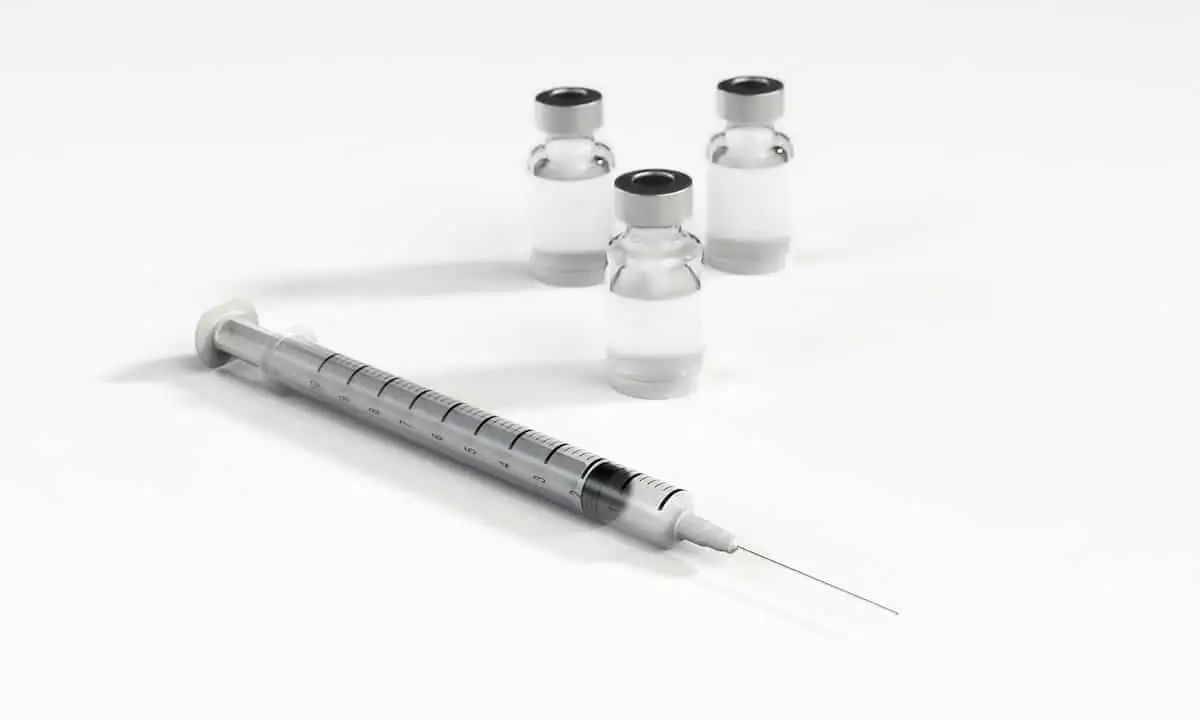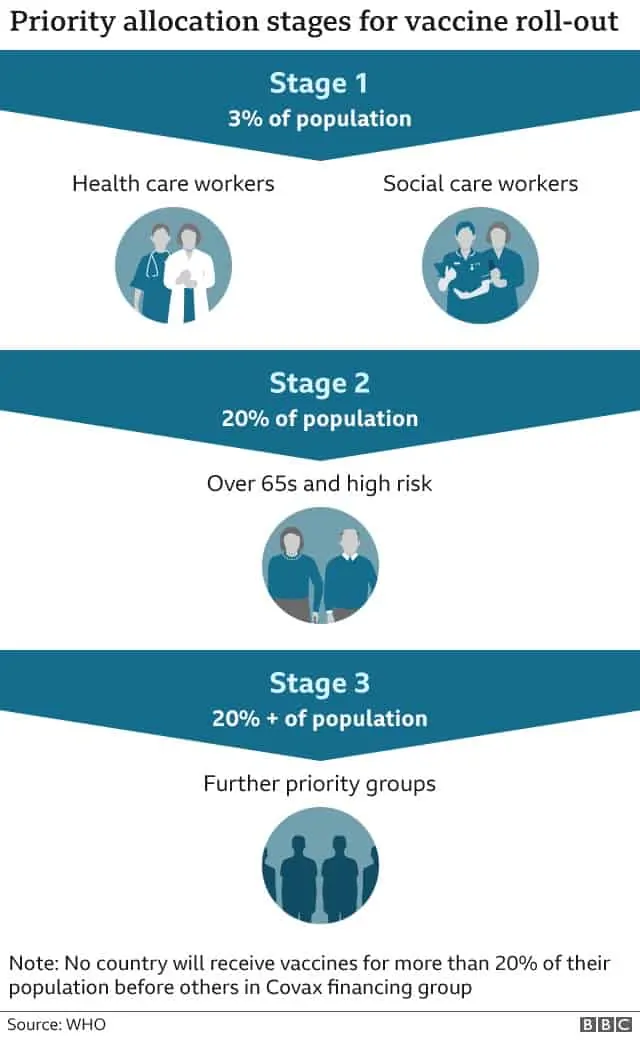
As the Covid-19 Coronavirus has wreaked havoc with everyone’s lives all over the world there is great hope for a vaccine to allow us to get back to normal. While all of the social distancing measures are fine to help mitigate the spread of the virus only a vaccine holds the promise of really preventing it’s further spread.
Over 7.8 billion people, the entire global population, will need the Covid-19 vaccine, whether people choose to take it or even have access to it.
With such an indiscriminate virus at work how do you efficiently and quickly get a vaccine to everyone in every country around the world? It is an incredible task that won’t happen without careful and well thought out planning and execution of the Supply Chain.
What is the Vaccine Distribution Supply Chain?
According to the World Health Organization (WHO) the role of Supply Chain “is to ensure effective vaccine storage, handling, and stock management; rigorous temperature control in the cold chain; and maintenance of adequate logistics management information systems. The ultimate goal is to ensure the uninterrupted availability of quality vaccines from manufacturer to service-delivery levels, so that opportunities to vaccinate are not missed because vaccines are unavailable.”
There are more than 160 coronavirus vaccines in development, according to the World Health Organization, though only 25 are currently in human studies. Developing the vaccine is an overwhelming scientific challenge in and of itself. But that’s only the start. Then you have to manufacture, transport and distribute it. A limited number of vaccines will end up getting approved for global distribution.
As the vaccines will be manufactured in a limited number of countries, and as the requirements for transportation and storage (eg. limited shelf life) may exceed the existing infrastructures (eg. ultra cold storage) in many parts of the world, the Vaccine Distribution Supply Chain challenge is daunting.
People and Vaccine Acceptance
Theoretically you would think that everyone should, and will, take the vaccine. The number of cases, the number of deaths, the disruption to our lives, and the unrelenting spread of the virus all would suggest that we should all take the vaccine.
But polls show that this is not the case at all. An October, 2020 poll by CNN shows that 51% of Americans would get vaccinated. Different polls should roughly the same result. Only half of people would get a vaccine.
Why wouldn’t more people get it? Some are concerned about the safety and effectiveness of the new vaccine. Still others are vaccine deniers no matter the circumstance. Regardless it does complicate the distribution of the vaccine when not everyone will take it.
Given that there will not initially be enough doses of the vaccine available even to provide for those who will take it, who will be prioritized to get it first? Governments and Health organizations will make these decisions but generally it is expected that essential Healthcare workers and Social care workers will get the limited initial vaccine supply first. This will be followed with deployment to older citizens, those with vulnerable medical conditions and select others. Additional focus groups are likely to follow concluding with rollout to everyone else.
State of Vaccines
Moderna, Pfizer, AstraZeneca and Janssen all have vaccines in Phase 3 trials as of mid November, 2020. Dozens of other companies have vaccine development in Phases 1, 2 and 3.
Moderna has declared that they are seeing 94.5% effectiveness in Phase 3 trials. Pfizer and BioNTech have declared that their vaccine candidate also shows 95% effectiveness in Phase 3 trials. Both vaccines require patients to get 2 doses.
The Moderna vaccine needs to be kept at -20 degrees Celsius, about the same temperature as a standard freezer. However the Pfizer vaccine needs to be kept at -70 degrees Celsius, requiring ultra-cold storage. For this reason Pfizer has developed specialized packaging utilizing dry ice to allow for movement and storage of the vaccine before going into ultra-cold storage.
The shelf life of these vaccines is also critical for understanding the Vaccine Distribution Supply Chain. According to Moderna “mRNA-1273 remains stable at -20° C (-4°F) for up to six months, at refrigerated conditions for up to 30 days and at room temperature for up to 12 hours.” The Pfizer vaccine however seems to have a much shorter shelf life, as low as 10 days or shorter.
With these vaccines closing in on approval for public use, manufacturing has been ramping up. But the complications of providing availability to all corners of the globe, ensuring refrigeration in transit and in storage, and dealing with short shelf lives, make the actual distribution of any vaccine a monumental challenge.
Procurement of Vaccines
Governments around the world have signed contracts with dozens of pharmaceutical companies for development and delivery of Coronavirus vaccines. These contracts commit those governments to spend billions of dollars.
For instance, the U.S. government is reported to have agreed to contracts worth $1.9 billion with Pfizer and $1 billion with Moderna.
These contracts typically cover a commitment to purchase an initial quantity of doses in advance of a proven and authorized vaccine.
Distribution Challenges
The scientific efforts and achievements necessary to create a viable, tested, and proven vaccine are formidable enough. The time pressure surrounding the need for the Covid-19 virus is also historic. As incredible as a scientific breakthrough on the vaccine is, it is only the beginning of the journey.
These companies need to ramp up the manufacturing capability to produce these vaccines so as to create billions of doses. The requirement to secure and expand physical facilities, equipment, systems, skilled staffing, and all of the component materials (eg. chemicals, reagents, dry ice) is equally challenging.
Once mass production of approved vaccines has been complete the challenges for distribution take over.
As we’ve mentioned there will be different vaccines from different companies. Each of these different vaccines will have different conditions for transportation and storage. The requirement for ultra-cold storage of the Pfizer vaccine in particular, combined with a short shelf life, will make this particularly difficult to administer.
Shelf life and refrigeration conditions will necessitate electronic tracking of the vaccines as they leave their manufacturing facilities, both in transit and in storage throughout the Supply Chain. Pfizer, for instance, is developing GPS thermal sensors to track the condition of their vaccine as it moves through the Supply Chain. All of this will be monitored by a Control Tower to ensure complete tracking and immediate actioning.
Given that many vaccines will require two doses of the same vaccine the tracking of who has got what vaccine, and when they need to take the second dose of the same vaccine (eg. within 30 days) means systemic tracking of vaccine deployment is crucial.
As mentioned previously there will also be a hierarchy in terms of who gets the vaccine first. While eventually the vaccine will be available to everyone, in the short term the distribution of the vaccine will be focused on specific constituents (eg. healthcare workers will get the vaccine first). This targeted deployment will require much more precision in distribution than if the vaccine was just shipped en masse to all population centres.
Reaching rural areas, and remote countries, with these heightened controls and transportation/storage infrastructure (eg. cold storage, short shelf life, refrigerated trucks and warehouse facilities) will test the expertise and process robustness of every government, pharmaceutical company, and logistics organization.
Most countries are not able to develop their own vaccine but they need it too. Further most countries will not have domestic manufacturing of the vaccine so imports are mandatory. Combined with the challenges of cold storage and short shelf life this will require air shipping to ensure expedient delivery of the vaccines.
There will be a need to retrofit airplanes for transport of these vaccines. Julian Sutch, head of Emirates SkyCargo’s pharmaceutical division, estimated recently that a single Boeing Co. 777 freighter can carry 1 million individual doses of a vaccine. That means airlifting double-dose regimens to protect half the world’s population would require the space in about 8,000 cargo planes. At a time when the airline industry has been suffering and taking capacity off line there will be a need to restore capability in short oder.
It’s also important to remember that the supply of the vaccine itself is not the only challenge. There will also need to be an adequate and commensurate supply of syringes and vials, dry ice, and ultra-cold storage facilities.
Electronic visibility to the entire end to end working of the Vaccine distribution Supply Chain is essential. Security at every stage and node of the Supply Chain will also be required to prevent theft and ensure control and adherence to all shipping and storage conditions. Unfortunately there is every likelihood that nefarious elements could introduce counterfeit vaccines or supplies so as to take advantage of the global demand.
The Vaccine Distribution Supply Chain
While everyone has been waiting for the scientists to create the vaccines needed to fight the Coronavirus, the next challenge is going to be how to get those doses to every person on the planet.
The distribution challenges are monumental. Everywhere possible expediency will require the leverage of existing distribution and logistics network infrastructure everywhere possible.
Pfizer, for instance, is using FedEx, UPS and USPS to handle distribution within the U.S., drop shipping directly to the points of consumption without any intervening distribution centre stops. A more direct shipping strategy will mitigate complications with handling, delays and cold temperature controls.
Further it will be necessary to leverage and expand last mile delivery capabilities. Often considered the province of e-commerce retailers, last mile delivery services must now be engaged and deployed to support the uncompromising handling and movement of these vaccines to the consumers.
Pharmaceutical companies, Logistics companies, Airlines and Government partnerships are necessary to coordinate the proper movement and storage of vaccines.
We are all counting on the Vaccine Distribution Supply Chain to deliver the vaccines that the scientists create, efficiently, effectively and flawlessly. This is perhaps the single most important logistics challenge since World War II.


